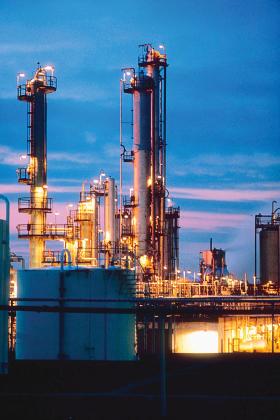
David Jacobs/ The Center Square
Louisiana oil and gas leaders are asking for federal help to get through the worst downturn the state’s industry has seen since the 1980s.
In April, an oversupply of oil combined with crashing demand amid the COVID-19 pandemic briefly pushed U.S. oil prices into negative territory for the first time ever. Traders were willing to pay to get rid of oil rather than figure out how to store it.
The price has rebounded to about $40 or so per barrel, but that’s not high enough to give companies confidence to invest, said Gifford Briggs, who heads the Louisiana Oil and Gas Association. Recent reports indicate Saudi Arabia, Russia and other major oil-producing countries may increase production soon, which could bring prices down again, he said.
At last count, there were 29 active oil rigs in Louisiana, Briggs said, counting nine in the Gulf of Mexico. In a normal year, there would be between 70 and 100, he said. Louisiana’s many service companies depend heavily on wells being drilled to stay busy.
LOGA is asking Congress to consider using stimulus money to plug “orphaned” wells. Since 1993, Louisiana has plugged more than 3,300 abandoned wells at a cost of $128 million. But there are still an estimated 4,200 orphan wells remaining, and Briggs said the number likely is growing.
Beyond the environmental benefit, a federally funded program to plug orphan wells could provide work to service companies and allow them to bring laid-off workers back. But it would only be a short-term bandage for an industry that would benefit far more from a robust economic recovery that increased demand for fuel.
“We need people going to Disney,” Briggs said. “We need people getting on cruise ships. We need people traveling to conferences.”
The oil and gas sector historically has seen many cycles of boom and bust. The current slump reminds many people in the industry of the 1980s crash that devastated Louisiana’s economy, said Lori LeBlanc, vice president of the Louisiana Mid-Continent Oil and Gas Association.
But she said the industry never really recovered from the last major downturn in 2016.
“The industry was in a downturn even before COVID,” LeBlanc said. “Everybody is just waiting for the demand to recover.”
LMOGA, along with the National Ocean Industries Association, is asking for two federal regulatory measures that it says would help the offshore sector. The U.S. Department of the Interior has the authority to grant companies relief from the royalties they have to pay the government, but it’s currently doing so on a case-by-case basis and the process is cumbersome, LeBlanc said.
The organizations are asking the federal government to grant temporary relief more broadly, which perhaps could be trigged by a certain oil price. They also are requesting a streamlined process to approve lease extensions for companies that aren’t currently producing on those leases, which they say would allow flexibility to delay expenses until the economic picture changes.
Mining and logging, the sector that includes oil and gas, gained about 200 jobs in Louisiana in June (the most recent month for which a breakdown was available), though it was down 6,700 jobs year-over-year, according to the Louisiana Workforce Commission. The sector had lost jobs nine of the previous 10 months compared to the previous year, the LWC says.
The Houma and Lafayette areas, which are the regions in the state most heavily dependent on oil and gas, posted unemployment rates of 8.8 percent and 9.2 percent respectively in June, compared to 5.3 percent and 5.4 percent in June 2019.
Haynes and Boone, a law firm that tracks oil patch bankruptcies, counted 18 exploration and production company bankruptcies nationwide in the second quarter of 2020, the most since the second quarter of 2016. Those failures have a ripple effect on Louisiana’s many service companies.
Falling oil prices can be caused by geopolitics or economics, notes economist Stephen Barnes, who directs the Kathleen Blanco Public Policy Center at UL-Lafayette and sits on the state’s Revenue Estimating Conference. This spring both factors were at play, as major oil-producing nations engaged in a price war and COVID-19 lockdowns sapped demand for fuel.
But the global political situation seems to have improved, he said. And demand for gasoline has bounced back to some extent, though the need for jet fuel has not.
Barnes doesn’t suggest good times are around the corner for Louisiana’s oil and gas industry, but things don’t look quite as bad as they looked a few months ago.
“I think we’ll be able to limp along until we can get to that broader recovery,” he said. “Limping along is a lot better than going under.”
